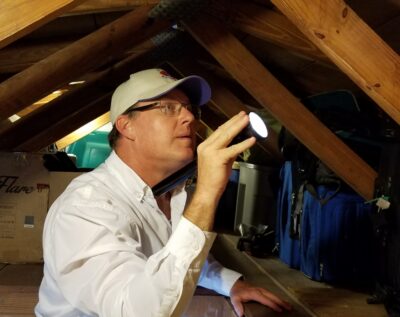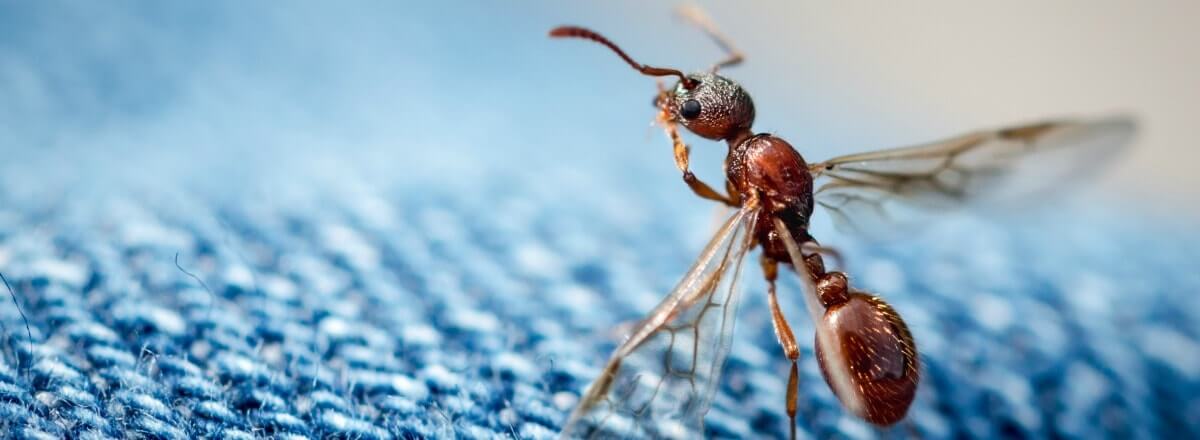
Controlling Ants in Your Home
Ants in Florida are simply a fact of life. Because of our mild climate, ants remain active year-round. They are always a nuisance and can sometimes be quite destructive. It can feel like a never-ending battle to eliminate the conga line of ghost ants dancing in single file across bathroom and kitchen counters. That threat is mild compared to the fire ant nests hidden in the lawn that can kill small animals and seriously harm children and adults with their venom if disturbed.
This is why Heath Pest Control takes your ant concerns as a top priority. We can work with you to create a solid, year-round plan of protection and prevention through our services.
Let’s take a look at what you can be facing with ants in your home.
Destructive Ants
We should all be on high alert for two particular types of ants that can cause real damage to your home, property and even to those you love.
Carpenter Ants
What they look like
The majority of the carpenter ant’s body is red-orange with a black area on the black front body section. They range in size from 1/5″ to 1/2″ in length, which is big for an ant. What’s more, a carpenter ant colony produces “swarmers” which are ants with wings. Because these large winged ants look very much like termites, you are best advised to have a professional confirm the identification and treatment plan.
What they do
Although one sign of a carpenter ant infestation is small piles of what looks like sawdust, carpenter ants do not feed on wood. They burrow into wood structures to build their colony or nest. Once settled, and near a food source, they will burrow further to create satellite colonies further damaging your home.
What they are looking for
Carpenter ants feed off of sweets such as sugary sodas and food. They also eat dead or living insects and their honeydew. Honeydew is a sugar-rich sticky liquid, secreted by aphids and some scale insects as they feed on plant sap. Carpenter ants are attracted to damaged wood as it is an ideal site for settling a colony and excavation for their home.
Steps to help prevent
The best way to prevent an infestation is to deprive the insect of access to food and the damaged wood that makes settling in easy. To prevent problems with carpenter ants it is important to reduce moisture levels in and around your home as well as keep all food well-contained.
- Keep gutters in good working order to direct water away from your home
- Fix leaky outdoor and indoor pipes, fixtures, and faucets
- Remove water-damaged wood from your home
- Utilize dehumidifiers and air conditioners to reduce humidity levels
- Properly ventilate crawl spaces
- Consult with your pest control professional at Heath Pest


Fire Ants
What they look like
You don’t have to see the dark brown to red, 1/8″ to 1/4″ in length fire ants to know they are there. Their dome-shaped mounds are usually visible in your yard.
What they do
If the mound is disturbed worker ants will pour out to attack intruders. These fiery beasts are very aggressive and their stings are extremely painful and usually require medical attention. Fire ant venom produces an immediate burning sensation and later white pustules emerge at the sting site on the skin. Allergic reactions to their venom can be deadly.
What they are looking for
Fire ants thrive year-round in Florida’s warm, humid environment. Seemingly omnivores, fire ants eat fruits, sugars and syrups as well as other insects and meat. Fire ants also consume grease and other lipids. They only need the sandy soil and moisture prevalent in Florida lawns to build their nesting mounds.
Steps to help prevent
- Trim back trees and bushes away from the exterior of your home
- Block their access to food as best you can by placing all trash in cans with locking lids
- Pick up any fruits and vegetables that have fallen from trees and plants
- Work with your pest control professional at Heath Pest Control to eliminate active mounds and prevent their return.
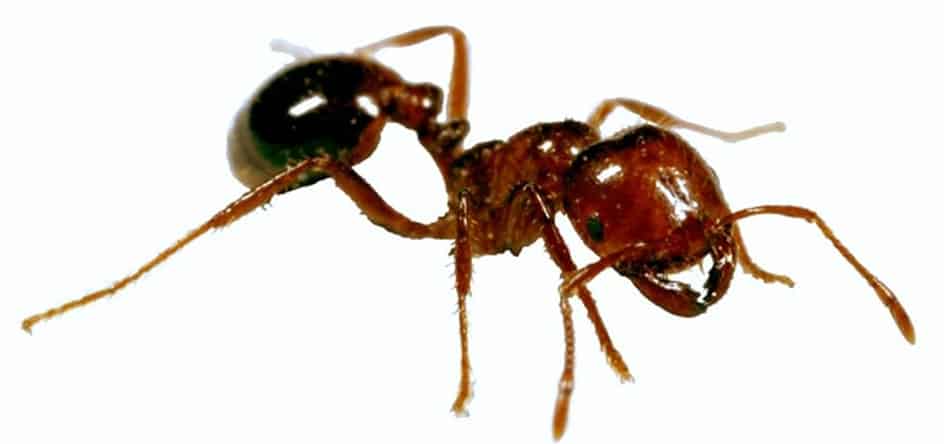
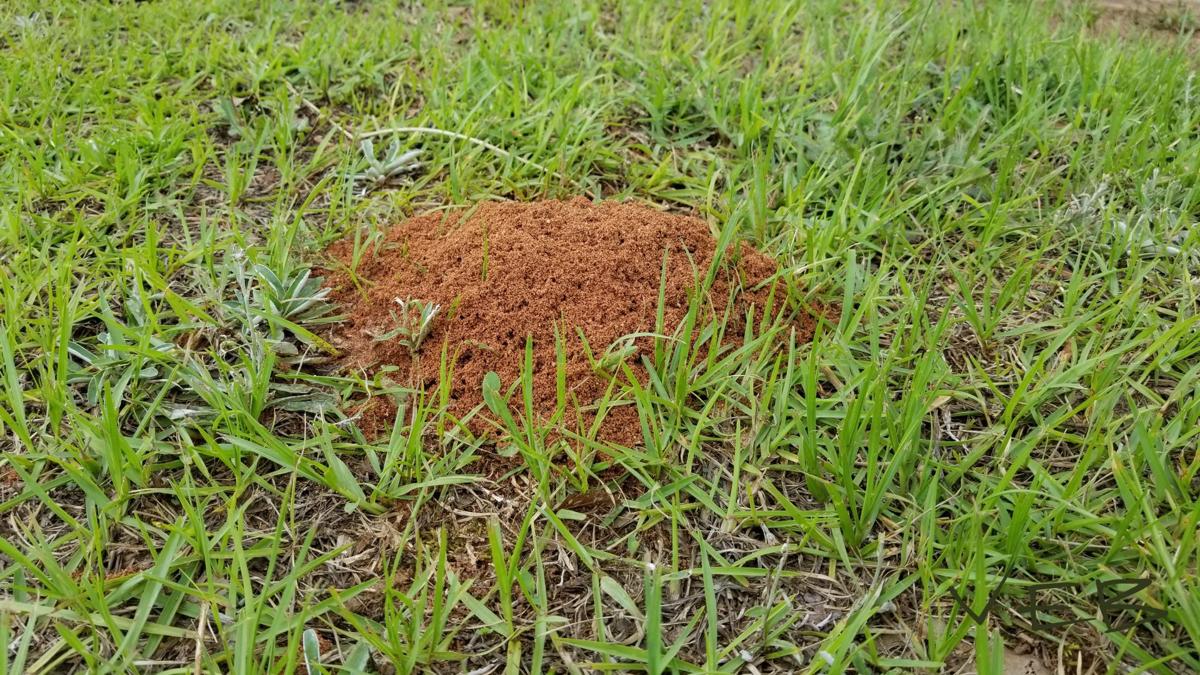
Nuisance Ants
Nuisance ants are a concern for peace of mind and quality of life inside your home and should be treated to prevent them from becoming part of your everyday reality. Here are the primary species that we see here in Florida.
Black Crazy Ants
Active all year, (dark brown or) black crazy ants are about 1/8″ in length. Look closely and you’ll see they have longer legs and antennae than other ants their size. They like to next in mulch, rocks, leaf litter and will forage far and wide seeking food that is greasy or sweet. When they find food they’ll cover it completely in a heartbeat.
Prevent their access to your home by trimming back branches that touch your home structure, and seal holes and cracks around doors and windows. If they get inside they will forage along the perimeter of a room along baseboards and carpet edges in long trails. If disturbed they run in “crazy” erratic patterns.
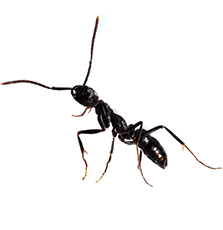
Ghost Ants
Ghost ants are tiny (about 1/16” in length) and, aside from the darker head and thorax, are nearly translucent. You will see them marching quickly in line seeking sweets and high-protein food. They’ll infest packages of food in your kitchen if you let them.
They might gain entry through crevices around doors, windows, utility pipes, and wire entry areas and are commonly seen on sinks, counters and floors of kitchens and bathrooms. But they can move anywhere via wires in wall voids and under edges of carpeting. Their indoor nests have been found in out of the way places such as between books, folded clothes and behind loose edges of wallpaper, although usually, they nest in wall voids, between and behind cabinets and in potted plants.
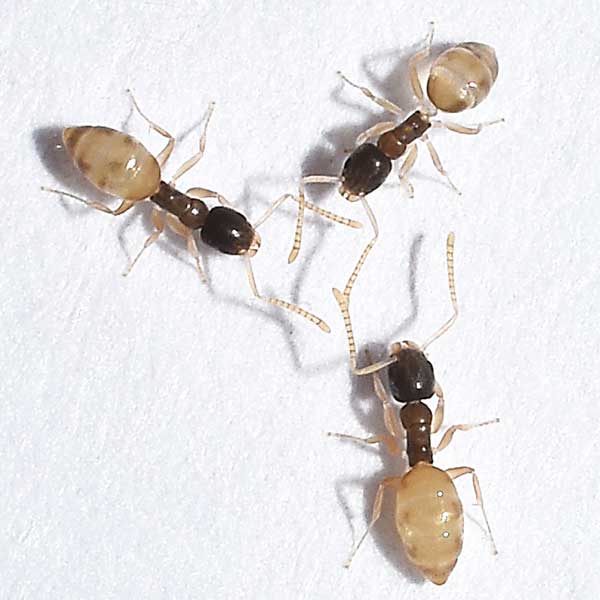
White-footed Ants
Rainy season is the hey-day for the 1/8” white-footed ant which is brown-black with light colored feet (if you are looking that closely!) They feed off of the sugary honeydew produced by some plants. They love the tropical ornamentals and nest nearby, above ground. They love their sweets, and if they can find sweet food inside your home, they will crawl in through any small openings they find. Look for them on the edges of exterior wall panels and cables.
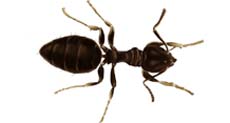
Big-Headed Ants
Big-headed ants, on average 1/8” long, come in a variety of shades from red or brown, to light yellow. Major workers are larger with a heart-shaped head that is disproportionately larger than the rest of the body. They nest underground and are not active during the few cold periods of a Florida winter. You’ll see more activity during the warmer (and hot) seasons and they’ll swarm in mid-Summer’s mating season.
These critters typically live in your lawn and plant beds although they will find a way to come indoors if they can feast on fats, meats, oily foods and sweet foods. Indoors they will stick to baseboards and carpet edges. Outdoors look for them along the edges of foundations, driveways, and sidewalks. Big-headed ants may leave mud tubes on foundations and other structures protecting their trails and entry areas. These are more fragile than termite mud tubes. But call a professional if you are suspicious.

Caribbean Crazy Ants
Caribbean crazy ants are golden-brown invaders from the Caribbean and South America that run around erratically. They don’t bit, but they smell and eat every other living insect they find. Leaves and yard litter are a favorite place to nest and you can minimize standing water sources that they also find attractive. If you are sweeping away dead ants on almost a daily basis then you likely have an infestation. They travel in large numbers and are difficult to eradicate once they’ve settled in.
Caribbean crazy ants are repelled by fire ant baits because they hate the oil in them that attracts fire ants. They prefer the protein of dead insects and honeydew from whiteflies and other insects. Our professional extermination efforts work best in February and March before the breeding season begins.
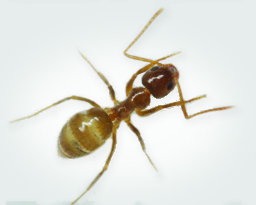
TESTIMONIALS
“Unfortunately we had fleas all over our new house ,brought in by a dog we babysat.? I immediately called Heath Pest Control (who was already my pest guy) to schedule an emergency appointment, to which he clearly explained to me my options with his company, but also my options of trying to deal with it myself. And through his guidance and information, I was able to rid my house of fleas on my own. It was very refreshing to have someone honest just trying to help me, instead of just trying to make money off of me. I will always use Heath Pest Control, And will always recommend them to my friends and family.” (Amanda Robinson)
